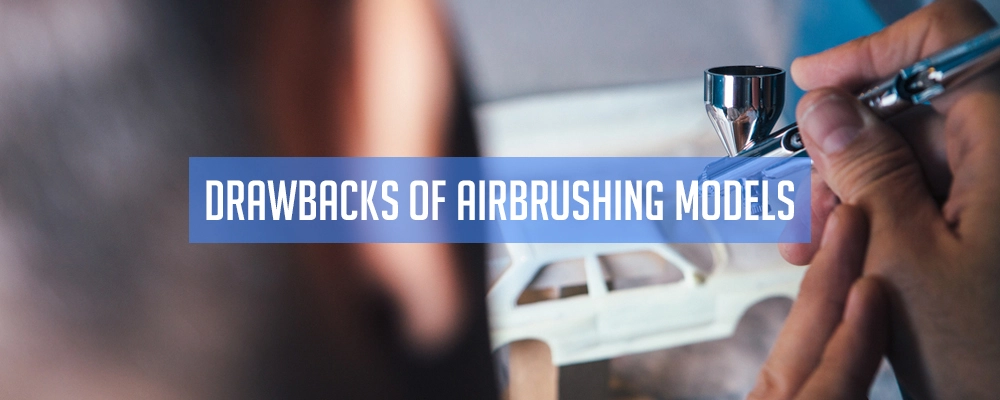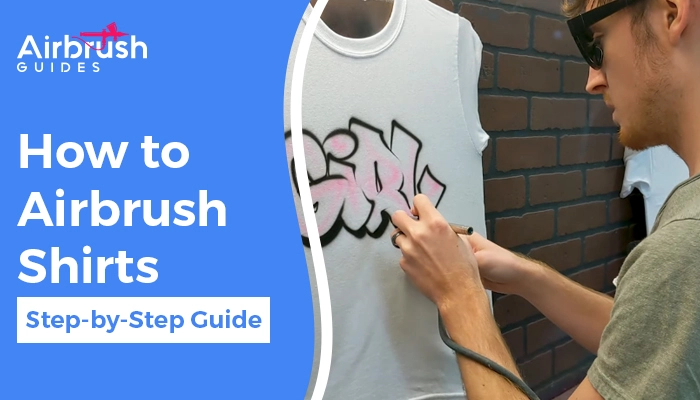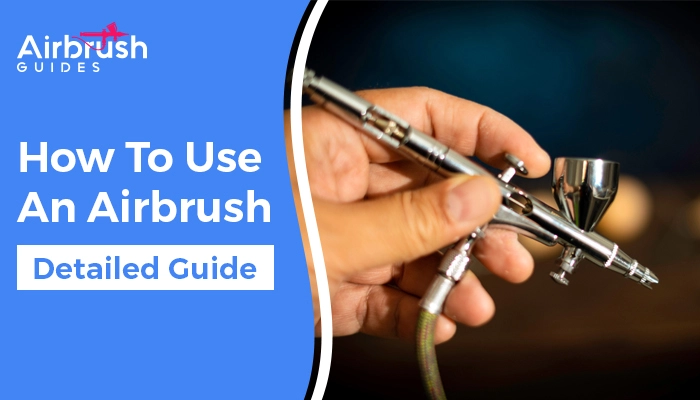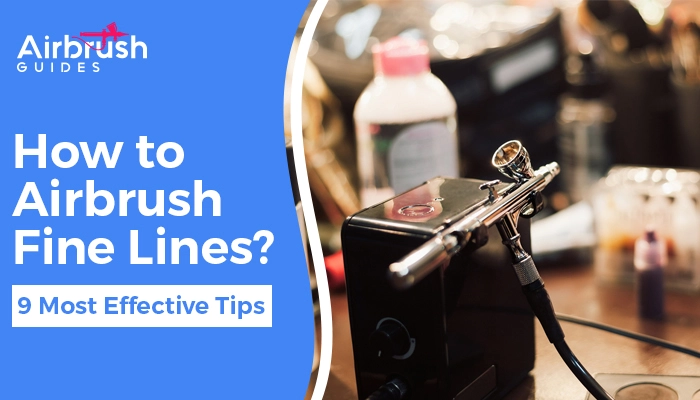How To Airbrush Models: The Ultimate Guide to Airbrushing Models
Airbrushing models is a popular hobby that has been around for many years. It is a technique used to apply paint to models with incredible accuracy, finesse, and detail. Airbrushing is an essential tool for hobbyists and professionals alike who want to create stunning models that stand out. In this article, we will cover the basics of how to airbrush models, from selecting the right equipment and paints to using different techniques and finishes.
Airbrushing is perfect for hobbyists and professionals alike who want to create stunning models that stand out. Airbrushing models can be a daunting task for beginners, but with the right knowledge and techniques, anyone can create a masterpiece. So without further ado, let’s get started.
How to Airbrush Models?
Selecting the Right Equipment:
The first step in airbrushing models is selecting the right equipment. An airbrush kit typically includes an airbrush, compressor, and air hose. There are two types of airbrushes: single-action and dual-action. Single-action airbrushes are easy to use and require less maintenance, making them ideal for beginners. Dual-action airbrushes, on the other hand, provide more control over the paint flow and are better for intricate designs.
When selecting a compressor, make sure it is compatible with your airbrush. The compressor should have a regulator to control the air pressure and a moisture trap to prevent water from entering the airbrush. Choose an air hose that is long enough to reach your workspace comfortably. Finally, select a paint that is compatible with your airbrush and has a suitable viscosity.
Preparing the Model:
Before you begin airbrushing, it’s important to prepare the model. Clean the model thoroughly to remove any dust, grease, or oil that may be on it. You can use soap and water or rubbing alcohol to clean the model. Let it dry completely before airbrushing.
Prime the model with a primer spray before airbrushing. The primer spray will help the paint adhere better to the model and create a smooth surface for the paint to adhere to. It will also help prevent the paint from chipping or peeling.
Using the Airbrush:
Once you have selected the right equipment and prepared the model, it’s time to start airbrushing. Begin by testing the airbrush on a test surface to get a feel for it. Adjust the air pressure to a level that is comfortable for you.
Hold the airbrush about 6-8 inches away from the model and start applying the paint. Use a steady hand to avoid any splatters or drips. It’s better to apply the paint in thin, even layers rather than thick layers. This will prevent the paint from running and dripping.
Finishing the Model:
After you have applied the paint, it’s time to finish the model. You can use a clear coat to protect the paint and give it a glossy finish. Let the clear coat dry completely before handling the model.
You can also use weathering techniques to give the model a more realistic look. Weathering techniques include dry brushing, washes, and chipping. These techniques will make the model look like it has been exposed to the elements and give it a more authentic look.
Airbrushing Techniques:
There are several techniques you can use when airbrushing models. One technique is the dot technique, which involves creating small dots of paint to build up the color gradually. Another technique is the fade technique, which involves blending two or more colors to create a gradient effect. The stippling technique involves creating small dots of paint that overlap to create a textured effect.
Another important technique is masking. Masking involves covering certain areas of the model with tape or paper to protect them from paint overspray. You can create intricate designs and patterns using masking techniques.
Airbrushing Tips:
Here are some tips to help you achieve the best results when airbrushing models:
- Practice on a test surface before airbrushing your model to get a feel for the airbrush and the paint.
- Always wear a mask and eye protection when airbrushing to protect yourself from fumes and paint overspray.
- Use a consistent and controlled motion when airbrushing to avoid splatters and drips.
- Clean your airbrush regularly to prevent clogs and maintain its performance.
- Use a well-ventilated workspace when airbrushing to prevent fumes from building up.
- Use high-quality paints and equipment to achieve the best results.
Here is a video showing how to airbrush models.
Drawbacks of Airbrushing Models:

Airbrushing models is a popular technique used by hobbyists and model enthusiasts to achieve realistic and detailed finishes on their models. However, while it has its benefits, there are also some downsides to airbrushing that some may consider as drawbacks. Here, we will explore the topic of why airbrushing models may not always be the best option and highlight some of the potential disadvantages.
Cost
Airbrushing can be expensive. The equipment required, including the airbrush itself, air compressor, paints, and other accessories, can quickly add up in cost. This may not be a feasible option for everyone, especially those on a budget or just starting out in the hobby.
Learning Curve
Airbrushing requires skill and practice to master. It can take time to learn the proper techniques, such as controlling the air pressure, paint flow, and achieving consistent coverage. Beginners may face a steep learning curve, resulting in frustration and unsatisfactory results.
Maintenance
Airbrushing equipment requires regular cleaning and maintenance to keep it in optimal condition. Failure to clean the airbrush properly after each use can result in clogs, dried paint, and reduced performance. This can be time-consuming and tedious, especially for those who may not have the patience or inclination for frequent maintenance.
Health and Safety Concerns
Airbrushing involves the use of paints and chemicals that can release fumes and particles into the air. This can pose health and safety risks, especially if proper ventilation and protective gear are not used. Breathing in fumes or getting paint on the skin or eyes can be hazardous. It is important to take appropriate precautions to protect oneself and work in a well-ventilated area.
Limited Application
Airbrushing may not be suitable for all types of models or projects. Some models, such as those with intricate details or small parts, may be difficult to airbrush effectively. Additionally, certain finishes, such as weathering or textured effects, may be challenging to achieve with an airbrush alone. In such cases, other techniques or methods may be more suitable.
FAQs about Airbrushing Models
Q. How do I thin my paint for use in an airbrush?
To thin your paint, add a small amount of thinner or water to the paint until it reaches the desired consistency. Check the manufacturer’s instructions for the recommended ratio of paint to thinner.
Q. Can I use oil-based paint with my airbrush?
It is not recommended to use oil-based paint with your airbrush, as it can clog the airbrush and be difficult to clean. Stick to water-based paints for best results.
Q. How do I create a matte finish on my model?
To create a matte finish, use a matte varnish or topcoat. Apply the varnish in thin, even layers and let it dry completely before handling the model.
Q. Can I airbrush models without an air compressor?
While an air compressor is commonly used in airbrushing, there are also alternative options such as air cans or propellant tanks that can be used for airbrushing on a smaller scale. However, they may have limitations in terms of air pressure and runtime.
Q. Can I achieve realistic results without airbrushing?
Yes, there are other techniques such as brush painting, dry brushing, and washes that can also achieve realistic finishes on models. These techniques may require different skill sets and tools, but they can be effective and more budget-friendly alternatives to airbrushing.
Q. What precautions should I take when airbrushing to protect my health and safety?
It is important to work in a well-ventilated area or use a spray booth to minimize exposure to fumes and particles. Wear a mask and eye protection to protect yourself from inhalation and contact with paint. Properly clean and maintain your airbrush to prevent clogs and reduce health risks associated with paint buildup. Follow the manufacturer.
Conclusion
Airbrushing models is a rewarding and enjoyable hobby that requires practice and patience. With the right equipment, techniques, and tips, you can create stunning models that stand out. Remember to select the right equipment, prepare your model properly, and use different techniques and finishes to achieve the desired result. With practice and perseverance, you can master the art of airbrushing models and take your hobby to the next level.






